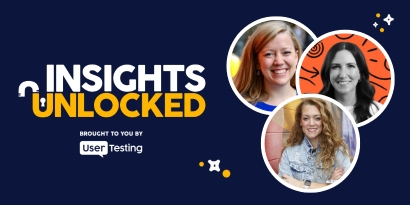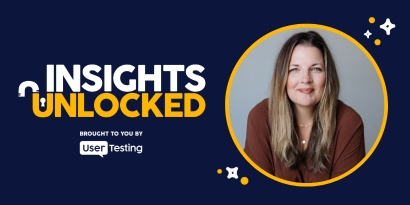Episode 20 | November 01, 2021
How product positioning drives B2B marketing success
Product positioning expert April Dunford shares how to craft a sales story that works, define best-fit customers, and win in B2B marketing.
Why product positioning is the unsung hero of B2B marketing success
If your product is great but your customers don’t understand it, do you even have a chance? According to April Dunford, the answer is no—not without great positioning.
In this Insights Unlocked episode, April Dunford—author of Sales Pitch and Obviously Awesome—shared her expert perspective on why product positioning is foundational to successful B2B marketing. With decades of experience leading marketing at startups and tech companies, Dunford has seen firsthand what makes customers lean in, get it, and buy.
Her advice? Nail your product positioning first, and everything else will flow from there.

Why positioning is core to B2B marketing
"We know what makes a good sales pitch," April said. "We know this because the data tells us. And what the data tells us is that what a customer really wants in a B2B software sales pitch is they actually want to understand the market."
This insight gets to the heart of product positioning: it’s not just about describing what your product does—it’s about clearly defining where your product fits, what it’s best at, and why that matters to the right customer.
When positioning is done right, it:
- Clarifies your differentiated value
- Aligns your internal teams (sales, product, marketing)
- Makes it easier to build a compelling sales pitch
- Shortens sales cycles and improves conversion rates
"Positioning is kind of the big strategic thing that product marketing needs to not necessarily own," April explained, "but they need to be the shepherds of it."
ON-DEMAND WEBINAR
Unlock higher conversions: understanding what users really want
In this webinar, you'll learn:
- How to identify hidden friction points that are preventing conversions
- Why traditional analytics fall short—and how customer insights fill the gap
- Actionable strategies to refine navigation, optimize CTAs, and enhance the user journey
The two big challenges for product marketers
April pointed out that most product marketers face two significant challenges:
- Nailing the product positioning
- Translating that positioning into a sales story that resonates
"Everything else is downstream from that," she emphasized. "Messaging, content, sales enablement—none of it works unless your positioning and sales narrative are tight."
She also noted that too many companies skip over positioning and head straight into tactical execution. "We just go straight to the demo," she said. "But there isn’t any kind of establishment at the beginning about, like, why are we here? What is the point of this meeting?"
Understanding your differentiated value
At the center of effective product positioning is a deep understanding of your differentiated value. That means identifying the unique features your product offers, the benefits those features deliver, and—most importantly—why those benefits matter to your best fit customer.
To get there, April recommends starting with a critical question: "What would customers do if we didn’t exist?"
This helps clarify the real alternatives in the market and how your product compares. Once you understand those alternatives, you can articulate what makes your product not just different—but better.

Who is your best fit customer?
One of the most valuable takeaways from the episode was April’s approach to identifying your best fit customer.
"Every B2B company out there has a group of customers that are super happy, that close really quickly, don’t ask for discounts, and intuitively get what our value is all about," she said. "Those people I care a lot about."
According to April, analyzing those customers—and deliberately filtering out the outliers or bad-fit customers—helps reveal patterns about who truly values your solution. "Not every customer is good data," she warned. "Some are bad fit, and including them can contaminate your positioning."
She shared a story about surveying customers to understand the competitive landscape. The data initially seemed chaotic—until she removed the bad-fit customers. "And then all of a sudden there's the pattern," she said.
How to find your best fit customer
Here are some ways to identify your best fit customer:
- Look for those who intuitively understand your product's value
- Focus on customers who close quickly and renew easily
- Analyze which customer segments generate the fewest support issues
- Prioritize those who refer others without being prompted
"The companies that really put a high price on your differentiated value are your best fit customers," April said. "They're super easy to market to. They're super easy to sell to."
Why category creation isn’t always the goal
A growing trend in B2B marketing is the push for companies to "create a new category." But April cautions against jumping into category creation too early.
"Creating a market category is an incredible amount of work. It typically takes a decade," she explained. "You need outside investment and patient investors to see it through."
She points out that most successful tech companies position themselves as a niche player in a large existing market before attempting to define or lead a new category. In fact, she said 93% of tech companies that IPO'd in the past five years followed this strategy.
Her advice? Focus first on finding your differentiated value and aligning it with the right segment of the market. "The easiest way to be successful in a new market is to start with an underserved niche, dominate that, and grow from there."
Positioning is a team sport
Another key insight from the conversation was that positioning isn't a solo act. April believes it requires a cross-functional effort that includes marketing, sales, product, customer success, and executive leadership.
"Sales knows what's happening on the ground. Product knows our capabilities. Customer success knows what happens after the deal. Marketing knows what messaging gets prospects interested," she said. "You need all of these perspectives."
She recommends gathering the team together and facilitating a collaborative positioning session. This not only leads to better positioning but also helps secure buy-in across departments.
Listen first, pitch second
April also highlighted a common mistake in B2B sales: pitching too early.
"What a customer wants is insight into the market. They want to understand the landscape," she said. A great sales pitch starts with listening and aligning on the problem before introducing your solution.
"If I can't get them aligned to my point of view on the market, I've got nothing to sell."
Her recommended structure for a sales conversation includes:
Setup phase: Establish the problem, market trends, and segmentation of different solution approaches
- Conversation phase: Ask questions, share insights, and listen to how the customer sees the world
- Follow-through phase: Present your product as the best fit to solve the defined problem
The strategic renaissance of product marketing
April sees the role of product marketing evolving—for the better.
"There's a bit of a pendulum swing happening," she said. "We spent a decade in marketing focused on tactics and growth hacks. Now, I think people are realizing the importance of strategy."
That shift is putting product marketers in a more central, strategic role—and positioning is at the heart of it all.
"If you get your arms around positioning and the sales pitch, everything else is tactical. But those two things? Those are the hard ones. And they matter most."
Product positioning isn’t a one-time event. It evolves as your market, product, and customer needs change. But if you're serious about winning in B2B marketing, it's the strategic cornerstone that sets everything else up for success.
"We don't have unlimited marketing and sales resources" April said. "We want to focus those resources on the people most likely to buy."
Episode links:
30 product discovery questions to ask about your next project: This resource offers a comprehensive list of questions to guide product discovery, helping teams understand customer needs, differentiate from competitors, and refine product positioning.
78 marketing questions to ask and test: This blog post provides a list of essential marketing questions to ensure strategies are effective and impactful, covering areas like customer experience, brand perception, and competitive analysis.
Concept testing: tactics and benefits: This article explores how concept testing can refine messaging and positioning, ensuring marketing campaigns resonate with target audiences.
How to create customer personas: This guide explains the importance of developing detailed customer personas to understand motivations, behaviors, and pain points, aiding in targeted messaging and product positioning.
How to improve brand reputation with customer insights: This resource discusses how integrating ongoing customer feedback into branding efforts can refine brand positioning and ensure long-term resonance and credibility.










